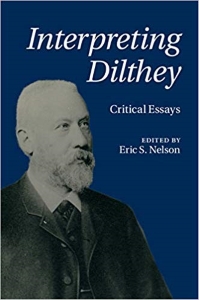An early peek into two upcoming books by our professors in the Division of Humanities: one on the philosophy of Wilhelm Dilthey, one on Chinese animation.
 Interpreting Dilthey: Critical Essays
Interpreting Dilthey: Critical Essays
Edited by Prof. Eric S. NELSON
See availability in Library
In this wide-ranging and authoritative volume, leading scholars engage with the philosophy and writings of Wilhelm Dilthey, a key figure in nineteenth-century thought. Their chapters cover his innovative philosophical strategies and explore how they can be understood in relation to their historical situation, as well as presenting incisive interpretations of Dilthey’s arguments, including their development, their content, and their influence on later thought. A key focus is on how Dilthey’s work remains relevant to current debates around art and literature, the biographical and autobiographical self, knowledge, language, science, culture, history, society, and psychology and the embodied mind. The volume will be important for researchers in hermeneutics, aesthetics, practical philosophy, and the history of German philosophy, providing a valuable introduction to Dilthey’s work as well as detailed critical analysis of its ongoing significance.
 Animated Encounters : Transnational Movements of Chinese Animation, 1940s-1970s
Animated Encounters : Transnational Movements of Chinese Animation, 1940s-1970s
By Prof. Daisy Yan DU
See availability in Library
China’s role in the history of world animation has been trivialized or largely forgotten. In Animated Encounters Daisy Yan Du addresses this omission in her study of Chinese animation and its engagement with international forces during its formative period, the 1940s–1970s. She introduces readers to transnational movements in early Chinese animation, tracing the involvement of Japanese, Soviet, American, Taiwanese, and China’s ethnic minorities, at socio-historical or representational levels, in animated filmmaking in China. Du argues that Chinese animation was international almost from its inception and that such border-crossing exchanges helped make it “Chinese” and subsequently transform the history of world animation. She highlights animated encounters and entanglements to provide an alternative to current studies of the subject characterized by a preoccupation with essentialist ideas of “Chineseness” and further questions the long-held belief that the forty-year-period in question was a time of cultural isolationism for China due to constant wars and revolutions.
Contact us for any questions: lbrs@ust.hk.
Hits: 10605
Go Back to page Top
- Category:
- HKUST Research
Tags: Daisy Yan DU, Eric S. NELSON, new books
published March 8, 2019
last modified March 5, 2020


